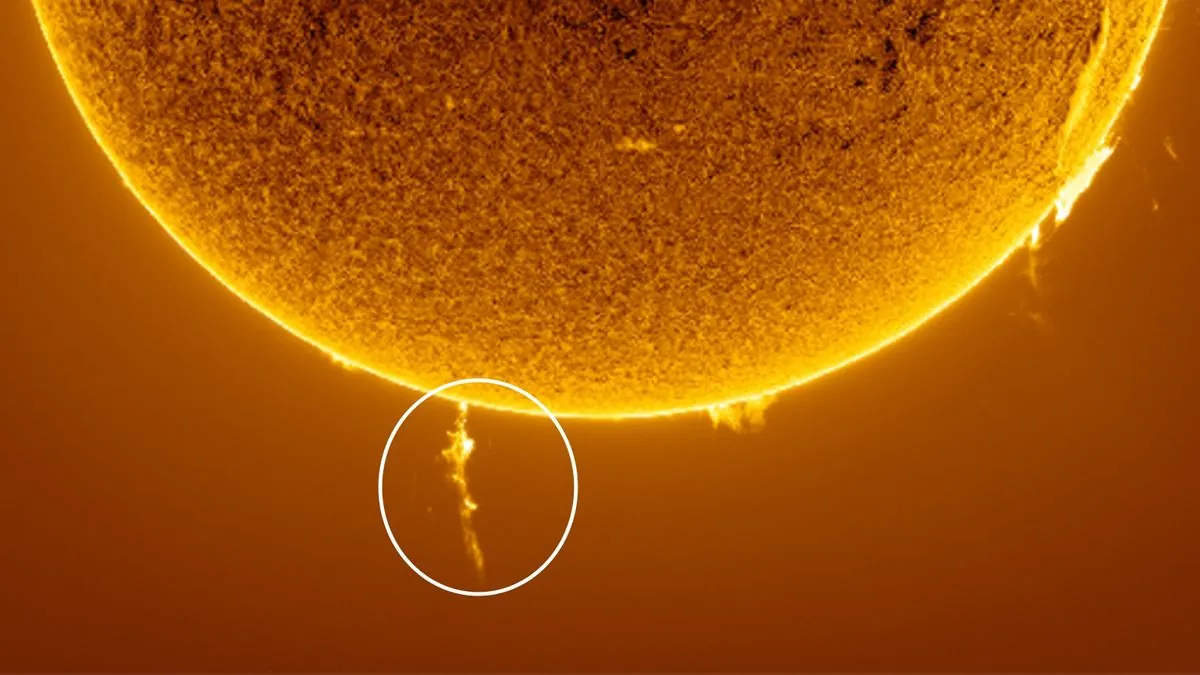A remarkable composite image has recently captured the sun's dynamic surface in unprecedented detail. This visual masterpiece, comprising 375 megapixels, offers a vivid glimpse into the intense activity occurring near our star's visible surface.
Andrew McCarthy, an astrophotographer based in Arizona, meticulously crafted this image by layering thousands of individual photographs. The result is a breathtaking representation of solar phenomena, including sunspots and matter ejections, as well as magnetic loops projecting from the sun's surface.
The creation of this image required processing more than one terabyte of data, showcasing the technical complexity behind such high-resolution astrophotography. This level of detail allows scientists and enthusiasts alike to observe intricate solar features that are typically invisible to the naked eye.
The sun, approximately 4.6 billion years old, is currently approaching the peak of its 11-year solar cycle. During this period, our star exhibits increased activity, ejecting charged particles towards Earth with greater frequency and intensity. This solar behavior has been linked to the more frequent and extreme solar storms observed this year.
"The sun's current peak activity provides us with a unique opportunity to study its complex magnetic field interactions and their effects on our planet."
These solar storms have a silver lining for skygazers, as they've produced spectacular auroras in Earth's night sky. The increased solar activity creates these mesmerizing light shows by interacting with our planet's magnetosphere.
It's worth noting that the sun's surface temperature is about 5,500°C (10,000°F), while its core reaches a staggering 15 million°C (27 million°F). The sun's immense size - 109 times wider than Earth - and its dominant role in our solar system, accounting for 99.86% of its mass, underscore the importance of studying its behavior.
The sun's magnetic field, which drives much of the observed activity, reverses every 11 years. This cycle influences the formation of sunspots, temporary phenomena caused by intense magnetic activity. Solar flares, another dramatic feature, can release energy equivalent to millions of 100-megaton hydrogen bombs.
As we observe these solar phenomena, it's crucial to remember that the light we see from the sun takes about 8 minutes to reach Earth. This composite image not only provides a stunning visual but also serves as a valuable tool for understanding the complex processes occurring on our nearest star.
